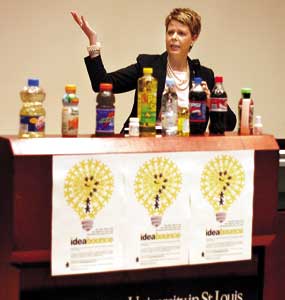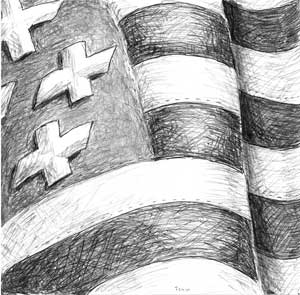Last month the University of Missouri-Columbia announced that it would distribute free condoms in residential hall restrooms. But on Oct. 11, the university renounced its decision.
According to STLtoday, spokeswoman Mary Jo Banken said that the program was never official. Heather Mueller, a health educator at Mizzou’s Student Health Center, said that the idea came from a fraternity on campus and that the Columbia/Boone County Health Department would supply the condoms. Both Banker and Mueller were not available for comment.
Although University of Missouri-Columbia (Mizzou) dorms will remain condomless, free condoms are available on their campus in the university Student Health Center, Women’s Center and Lesbian, Gay, Bisexual, Transgender Resource Center.
Many students at Mizzou are disappointed with the university’s decision to back down.
“I think they should put condoms in dorms. If kids are going to have sex, they should at least be safe. I thought it was a good idea,” said Joey Bazzi, a Mizzou sophomore.
Condoms are in greater supply at Washington University and administrators have more flexibility when making decisions involving contraception. “Washington University is a private institution. We have the freedom to make our own procedures because we don’t have state money for this kind of project,” said Melissa Ruwitch, assistant director of Student Health Services.
Free condoms are available in nearly every dorm and off campus apartment at the University. The Student Health Advisory Committee (SHAC) promotes safer sex by providing students with access to free condoms and sexual health information through the program We’ve Got You Covered. RAs have the option of joining the program. Participating RAs are responsible for refilling packets full of both condoms and pamphlets that are normally hung on a bulletin board.
“The most important thing about sexual health resources in WU residence halls is that they are very student-driven,” said Ruwitch.
SHAC worked with Student Union and Residential Life in designing the packages that are available in dorms. Each package consists of an envelope containing two LifeStyles condoms and an information packet entitled “Sexual Health.”
Ruwitch noted that these packages are, “obvious for those looking for them, but they are done in a manner that’s discrete and respectful so that students who are against them will not be offended.”
Senior Richard Zernickow, an RA in Millbrook, is pleased with the program. “I think it’s really good because it gives people condoms, but it also provides pamphlets with substantial information that people might not be getting from other sources. As a guy, I hear a lot about sex from my friends, but a lot of the information that’s out there is hearsay.
“At Millbrook, the condoms definitely get taken. I just refilled the packet last week. I think it helps that they are placed on a bulletin board in an open space that’s very obvious so that people can see it,” said Zernickow.
Many Washington University students are disappointed with Mizzou’s decision to abstain from providing free condoms in dorms. “Even though it’s a public school, I think they still should distribute free condoms. When situations arise where people need them, they will be more likely to use them if they have easy access to them and they don’t have to go out and buy them,” said junior Lizzie Schwartz.
 Courtesy of Dylan Bixby
Courtesy of Dylan Bixby MCT CAMPUS
MCT CAMPUS Student Life Archives
Student Life Archives Temu Brown
Temu Brown Rachel Tepper and Karl Improv
Rachel Tepper and Karl Improv